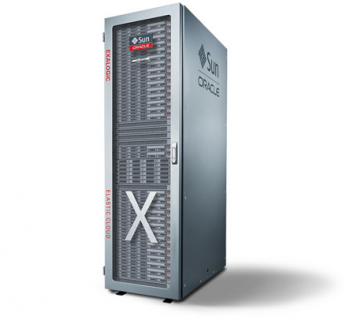Oracle Rolls Out IaaS for Private Cloud
Oracle is rolling out its version of an Infrastructure-as-a-Service (IaaS) platform, which asks clients to deploy hardware in-house and use it to generate a private cloud behind a firewall. Oracle claims that on-premise, private cloud infrastructure will provide organizations “with total control and visibility over their IT environments,” which in turn will enable them “to meet internal and regulatory compliance and security requirements.” The platform allows organizations to deploy Oracle systems such as Oracle Exadata Database Machine, Oracle Exalogic Elastic Cloud, Oracle SPARC SuperCluster, and Oracle Exalytics In-Memory Machine behind the firewall. While operating a private cloud behind a firewall may bolster an organization’s security, it’s not “IaaS” as some other IT vendors define it. Whether IBM, Salesforce, SAP, Amazon, or Microsoft, these companies tend to isolate Software-as-a-Service (SaaS), Platform-as-a-Service (PaaS) and Infrastructure-as-a-Service (IaaS) as public-cloud offerings accessible via the browser. On-premises hardware simply isn’t part of the equation. Despite selling this new IaaS platform as a private cloud solution, Oracle has adopted some public-cloud features in order to sweeten the deal for customers. For example, Oracle claims it will charge customers only for peak CPU capacity in the months it’s used—a modified version of the pay-as-you-go cost structure employed by Amazon Web Services and others. Even as it adds to its private-cloud portfolio, Oracle continues to push aggressively into the public cloud. Last summer, Oracle CEO Larry Ellison rolled out Oracle Cloud, which offers dozens of applications for business. “Our cloud is elastic like Amazon’s cloud is elastic,” he claimed at the time. “Who are we most like? I guess at the platform level we’re kind of similar to Amazon.” When a client needs more capacity, “we spool up another virtual machine; most of our competitors don’t give you additional capacity as you need it.” That hearty touting of the public cloud was an abrupt shift for Oracle, which for years had appeared reluctant to embrace “the cloud” with the same fervor as its competitors, instead opting to push a fused stack of hardware and software offerings. Given the strides its rivals were making in the space, perhaps Oracle felt that it had little choice in the matter. But Oracle’s a large enough company to pursue several lines of business at once; even as it buttresses its public-cloud capabilities, it evidently continues to grow its presence in the private cloud. Image: Oracle
